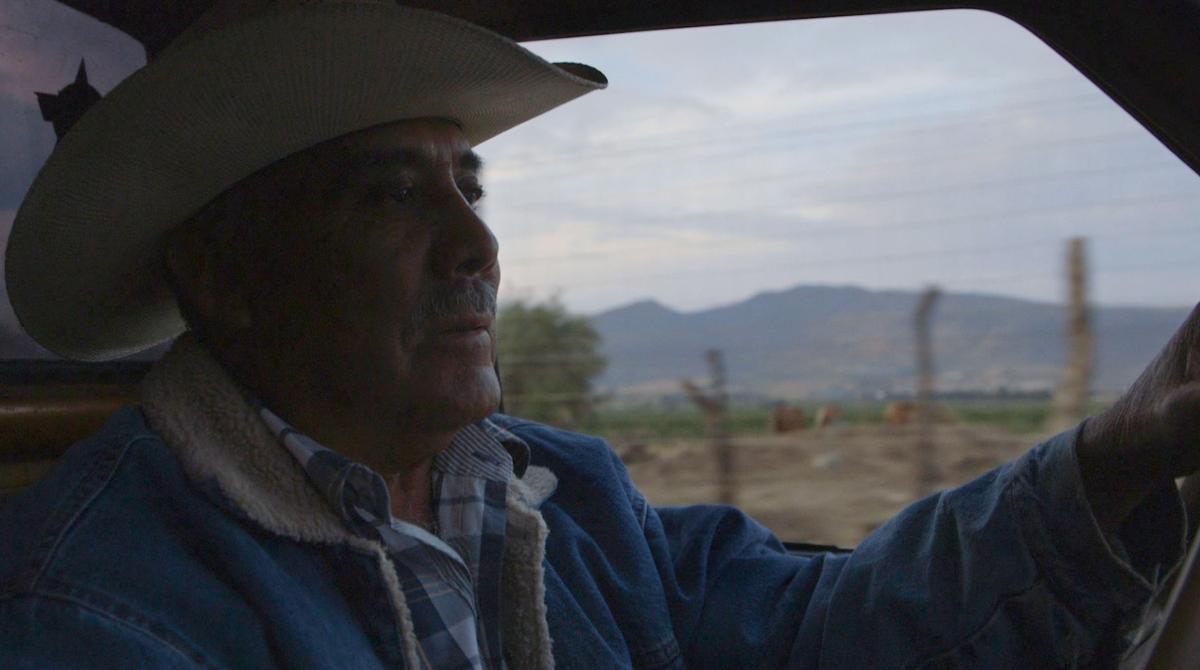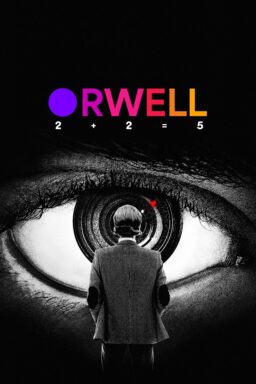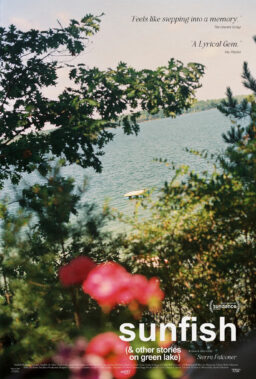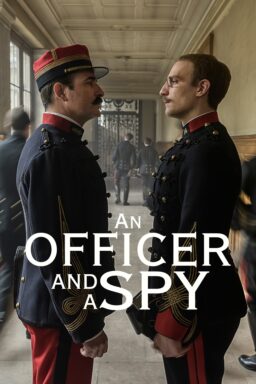One of the best films at the festival, Juan Pablo González’s “Caballerango” captures spare haunted moments in Milpillas, a rural Mexican village that has been reeling from a series of suicides. A horse vacantly stares in the camera. A woman pulls the skin off chicken legs. Two men have a sprinting contest while a group places bets. People work while the world changes around them. The landscape remains the same.
<span class="s1" These scenes have an indefinably eerie quality that stems from González’s choice to make his camera as invisible as possible. He lingers on events longer than most filmmakers, illustrating the passage of time as much as the action in the frame. He interviews people discussing the various losses that have affected them and their community—a son’s suicide, his sister’s miscarriage, his brother’s friends’ deaths—but the focus in “Caballerango” remains productively unstable. The suicides are treated as individual tragedies while also serving as microcosms for the economic deterioration in the area, an avenue that González would rather gesture towards than didactically explore.
González employs a creative rhythmic strategy to communicate his empathy towards the Milpillas community. He conditions his audience to observe the mundane at length, to “experience the frame instead of someone editing,” as he explained in Filmmaker Magazine to describe his short film “The Solitude of Memory.” Thus, when the unexpected invades the frame, it engenders surprise or awe, like a late-night vigil that stalks the streets. It’s an attempt to inure the audience into the pace of life in Milpillas while also demonstrating how ghosts, metaphoric and literal, permanently disrupt everyday lives. The spectral drives “Caballerango” while the people themselves reside at its center.

“American Factory”
Netflix bought Steven Bognar and Julia Reichert’s “American Factory” for under $3 million following its world premiere at Sundance earlier this year. This might be a drop in the bucket for a streaming service that essentially prints its own money, but it still ostensibly represents a belief that a documentary about a Chinese-owned car-glass manufacturing company in Dayton, Ohio can garner a sizable audience on their platform. Given that the film directly engages with Recession-sourced working class plight, unionization in face of indifferent corporate superstructures, and the difficulties of reconciling different cultures during the height of globalization, Netflix might have made a good bet.
In 2014, Chinese billionaire Cao Dewang opens up a Fuyao manufacturing plant in Dayton. For the locals, this represents a bright new opportunity, especially after General Motors shuttered their factory in 2008. At first, “American Factory” focuses on the humorous side of the culture clash: the Chinese workers, transplanted from the safety of their homes and families, learn about the nuances of their American peers in classroom settings, while the Americans deal with the Chinese workers’ hyper-detail-focused nature and staunch work ethic on the job. Yet, tensions quickly escalate as Chinese management become frustrated with their American counterparts as well as the country’s labor laws. Lax safety standards and the looming threat of automation spark union talks amongst the workers, which erodes all previous good will. The film becomes a chronicle of the age-old war between labor and management, only this time with easily drawn global implications vis-à-vis Chinese economic control and America’s bleak manufacturing future. The metaphors invent themselves when you’re watching irreconcilable worldviews engage with each other in real time.
Bognar and Reichert’s film maneuvers between different tones at ease. It’s a fish-out-of-water comedy one moment and a searing indictment of hellacious corporate practices the next. This casual tonal shifts allows the film’s truly horrifying moments to pop, like when an American supervisor tells his Chinese peer that he wishes he could tape his workers’ mouths shut so they wouldn’t talk as much on the job, or Dewang’s underlings expressing disbelief at the idea of Americans not working weekends. There’s probably one too many threads at play in the film, but even the most digressive elements contribute to a modern portrait of American labor fighting upwind against a culture that has all but abandoned them.
What keeps me from wholly embracing “American Factory” lies in Bognar and Reichert’s macro-structural decision to provide everyone, from the factory workers to Dewang himself, an equal platform. On paper, the choice is sound, a necessary step to providing a full picture, but when the film shifts focus to the unionization efforts, it occasionally scans as a blatant attempt for obvious villains to save face. Bognar and Reichert provide a steady, neutral presence, which obviously helps with access and trust, but their inability to express a strong critical viewpoint becomes a liability. Everyone is human, yes, but when certain individuals have the expressed goal of continually putting workers in harm’s way to save a buck, maybe some are more human than others.
I walked out of “American Factory” thinking that no one could possibly watch that film and come away believing that unions are anything less than a necessity. Sure enough, two people behind me were talking about how unions “made sense for a time,” but they ultimately bred laziness and stifled innovation. I don’t for a second doubt Bognar and Reichert’s intentions, but because “American Factory” plays to all time zones, it will inevitably confirm whatever pre-conceived biases you already hold. Granted, it’s not the job of “American Factory” to change minds, but at some point, the choice not to take a tougher political stance weakens the film.

“The Hottest August”
Brett Story’s “The Hottest August” technically focuses on the dark specter of the impending global climate disaster through the voices of New Yorkers over the span of a month, but its larger aim is to encapsulate the sense of dread that currently permeates the world. In August 2017, Story traveled across all five boroughs, either going to a specific event in the city or posting up at a single location, to film conversations about “the future.” Different anxieties fill the air—economic, social, racial, political—and the testimonies directly engage with the ineffable sense of catastrophe that feels like it’s lurking around the corner. Sometimes the responses are measured while others are tossed off. Trump’s recent inauguration hangs over the city, not to mention the violent aftermath of Unite the Right rally as well as the solar eclipse, which Story uses as a structural bookend. In between these interviews, actress Clare Coulter provides clinical, semi-otherworldly narration; she reads excerpts from Marx, Zadie Smith, and a “New Yorker” essay by Annie Dillard. Story’s film scans as a long-form exploration of the most chilling line from Paul Schrader’s “First Reformed”: “This social system isn’t built for multiple crises.”
Story and her editor Nels Bangerter visually and aurally communicate the low-grade terror that now fills our lives quite effectively. “The Hottest August” is freewheeling by its very nature, jumping from topic to topic similar to Story’s borough hopping. The collective fear, and the ways in which it’s expressed, mostly keeps the interviews connected. It’s how a young college graduate worried about job prospects can feel in line with middle-aged Staten Island bar patrons discussing racism, even if the expressed anxieties are diametrically opposed. Story lets her subjects talk freely and jumps in to further the conversation or question the answers. (The best example might be when she questions an art collecting hedge fund manager about the value of capitalism.) She encounters these New Yorkers at a critical point, and while all are self-aware about the respective despair, none feel particularly hopeless. Systemic collapse doesn’t necessarily crush individual hope.
Story clearly reverse-engineered “The Hottest August” from the numerous interviews she conducted, and though that’s a valid creative strategy, the project feels unproductively diffuse at times. It lives and dies by the charisma of her subjects, which vary wildly, and certain participants, like a futurist performance artist, just simply aren’t engaging enough to justify the time spent with them. I couldn’t help but wonder if the film would have a stronger impact on me if the scope were limited exclusively to climate change. At the same time, “The Hottest August” succeeds as a portrait of New York in crisis and I can easily see myself coming around to certain digressive elements on a second viewing. It’s a colossal film, one that I predict will be major if distributed, that bottles up our depressing zeitgeist with maximum insight, and yet I still felt underwhelmed. Maybe just living in this culture will do that to you sometimes.

“Finding Frances”
Though it never occurred to me when it was airing, “Nathan For You,” the satirical docu-reality series co-created by and starring comedian Nathan Fielder, is a perfect fit for True/False. Fielder’s elaborate, counterintuitive marketing proposals for struggling businesses—offering a gas station rebate that’s almost impossible to claim; exploiting the fair use doctrine to rebrand a struggling coffee shop as Dumb Starbucks; using a theatrical construct to help a dive bar get around a smoking ban—always straddled the line between performance art and non-fiction storytelling. Fielder and his team employed many of the principles of documentary filmmaking to pull off their stunts, finding humor in the gaps between their noble-but-misguided intentions and the participants’ willingness to go along with them. “Nathan For You” raises many of the standard philosophical and ethical questions that “serious” documentarians grapple with during their own projects, plus some legal ones as well. (A friend pointed out that Fielder must have kept Comedy Central’s legal team very busy over the course of the series.) All of these qualities make “Nathan For You” pure, unfettered True/False bait.
I won’t restate the plot of “Nathan For You’s” brilliant series finale “Finding Frances” in this space; it’s readily available to stream and you can read multiple recaps or reviews if you wish, including one penned by Errol Morris. However, I will say that watching the film/episode (I’m not getting into this debate) in the Missouri Theatre, where all 1,200 seats were filled with either Fielder acolytes or curious newcomers, was a genuine event. In retrospect, it was a perfect fit for the festival: an audacious crowd-pleaser that not only pushes Fielder’s project to its limit but also vibes neatly with the rest of the programming lineup. It’s no surprise that True/False has apparently been trying to get Fielder to come out to Columbia for some time. Sure enough, the crowd treated Fielder like a rock star when he arrived for the Q&A (the guy sitting next to me jumped to his feet and screamed as if Mick Jagger strolled across the stage). He answered multiple questions in his wonderful deadpan cadence and screened some deleted scenes for the audience. “Finding Frances” illustrates that True/False can indulge in its populist side without abandoning its principles.
To read part one of Vikram Murthi’s True/False coverage, click here












